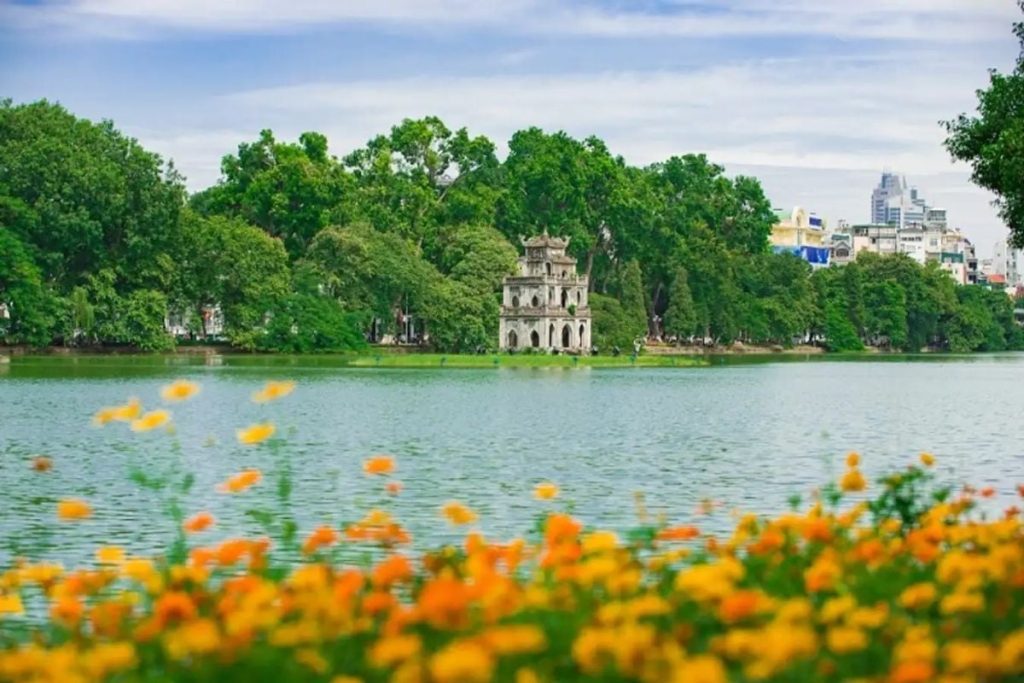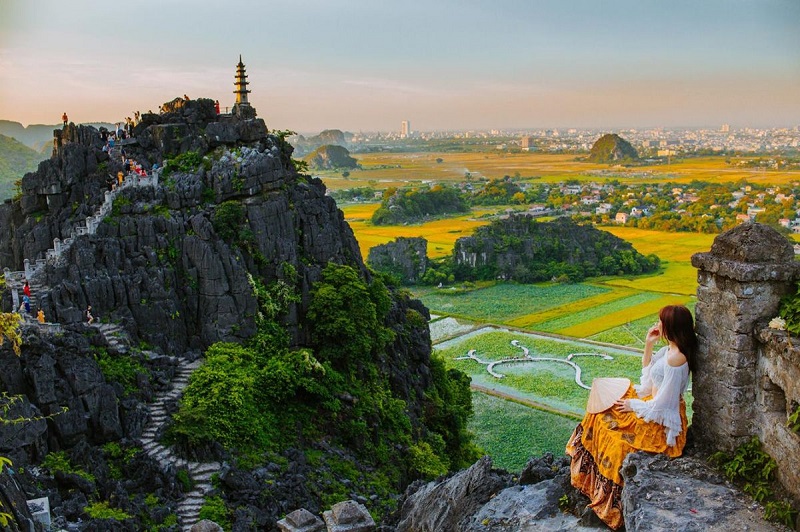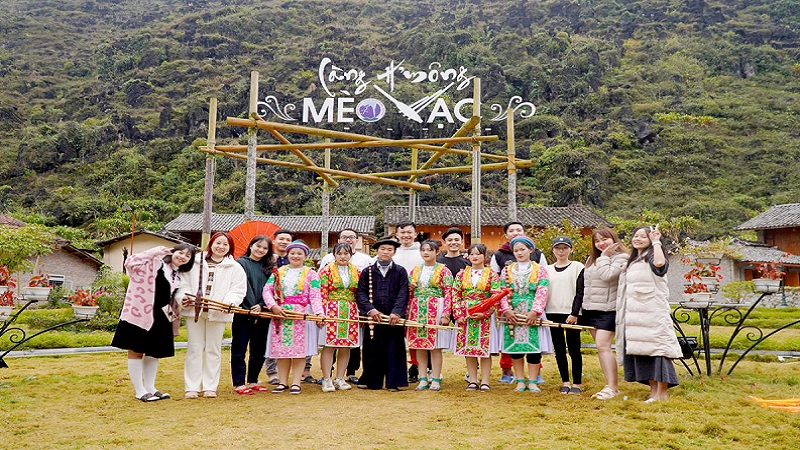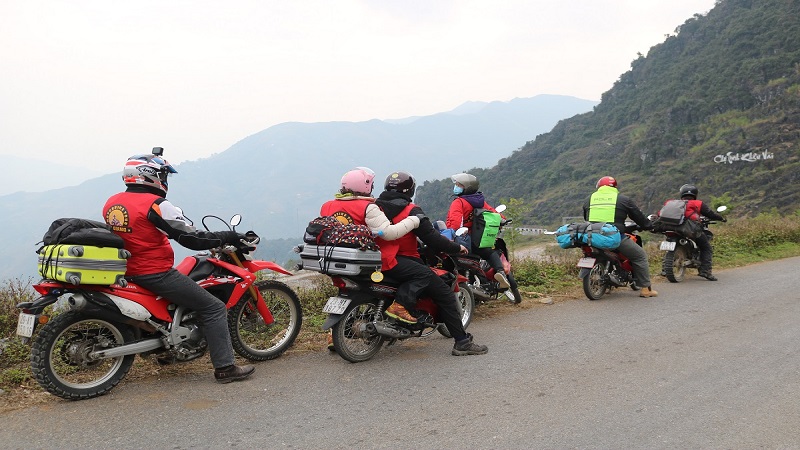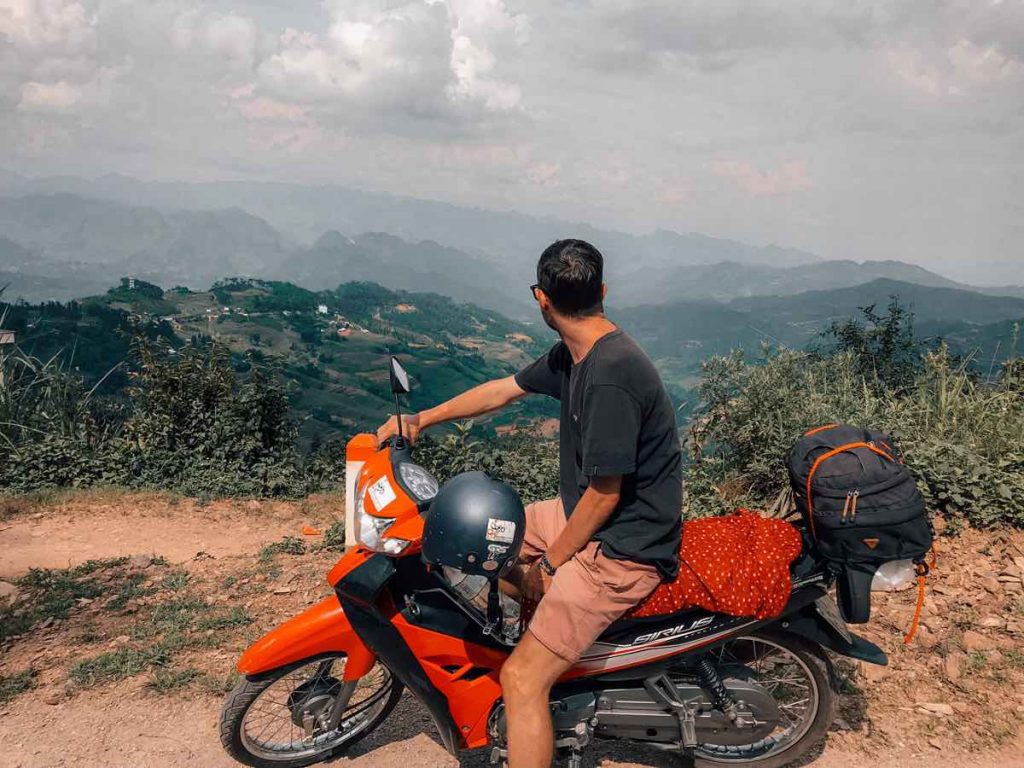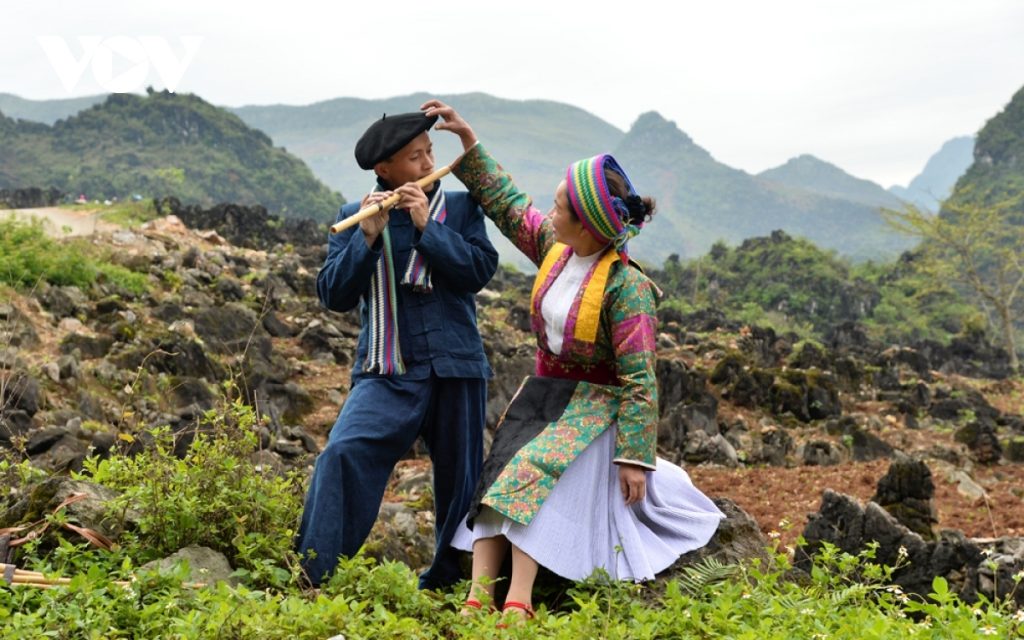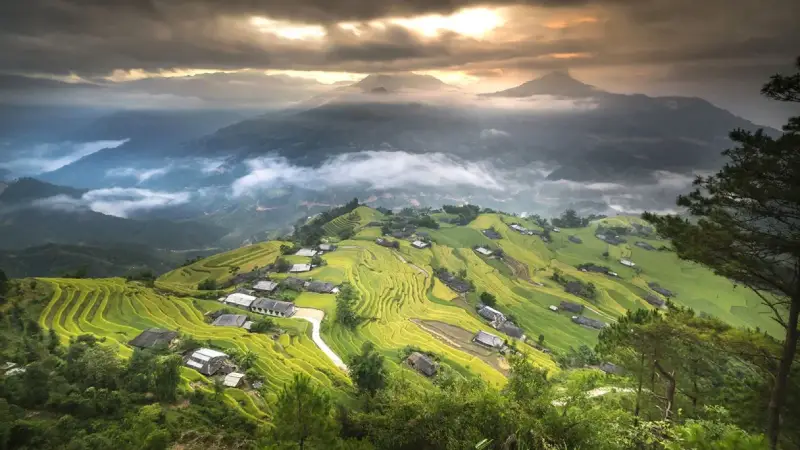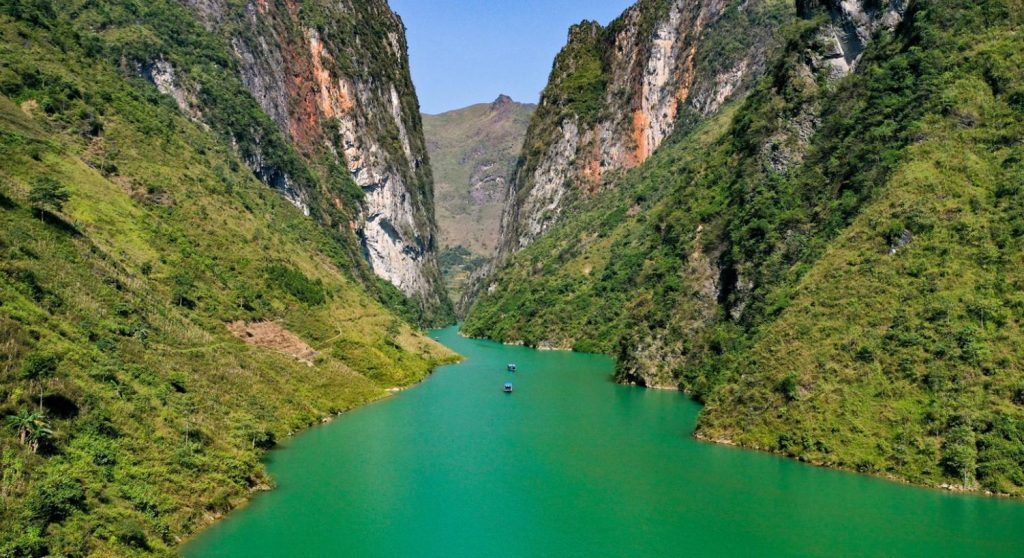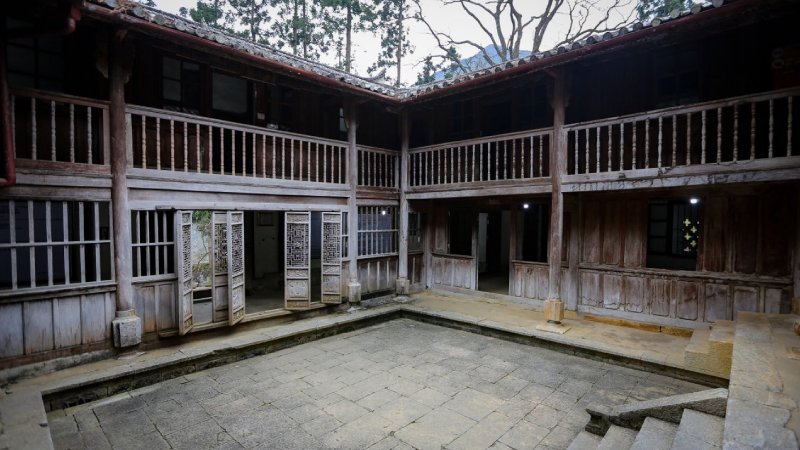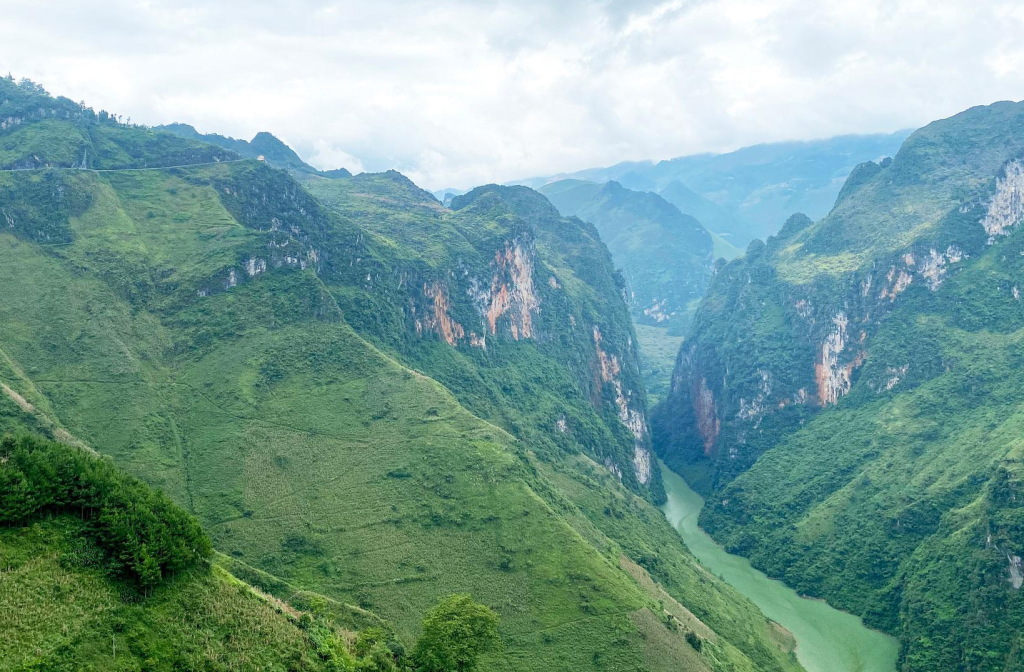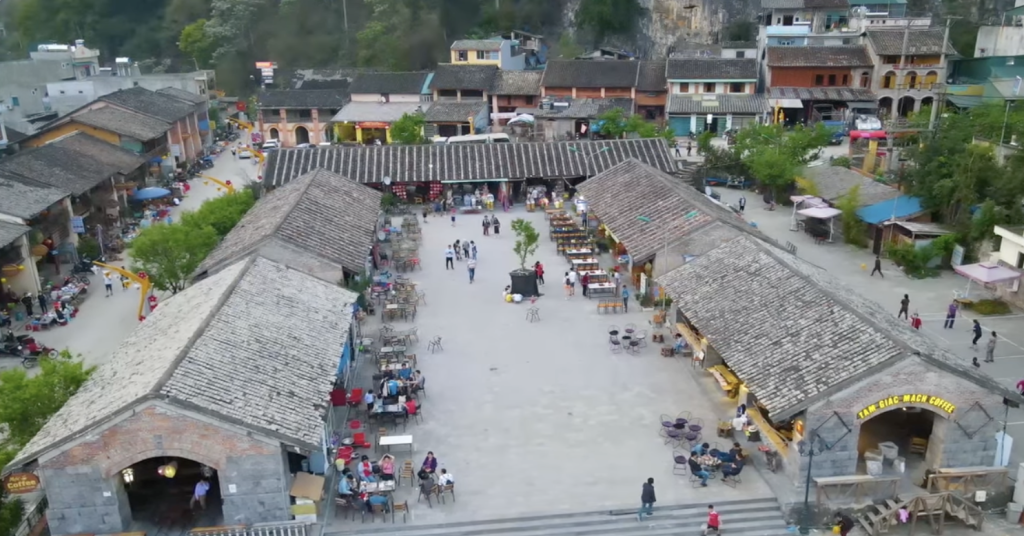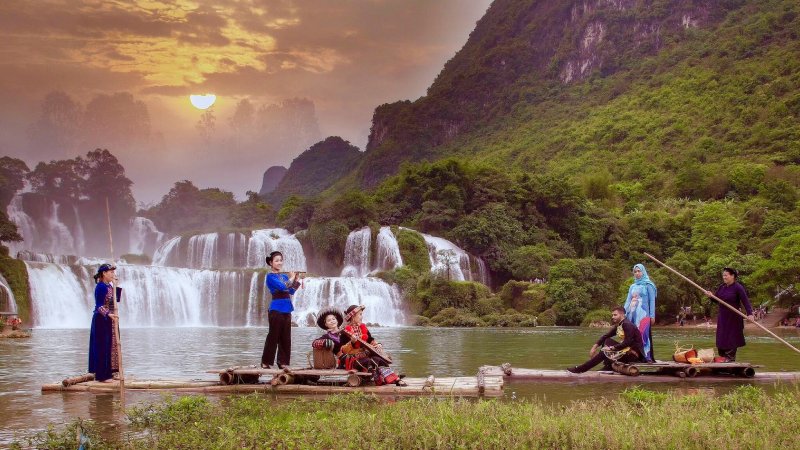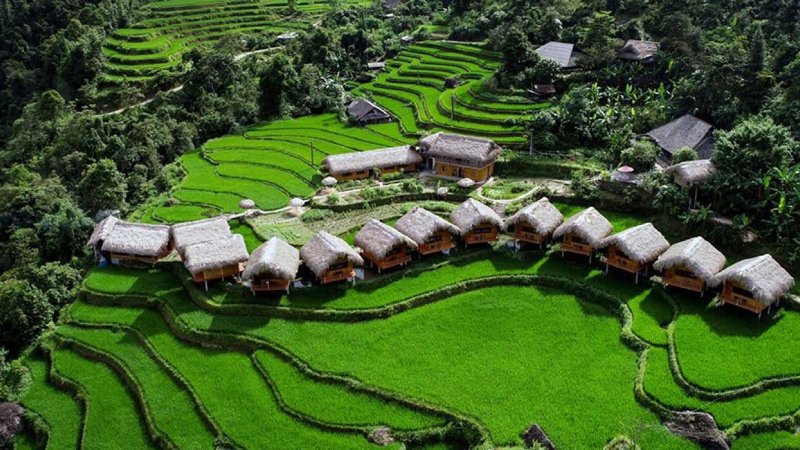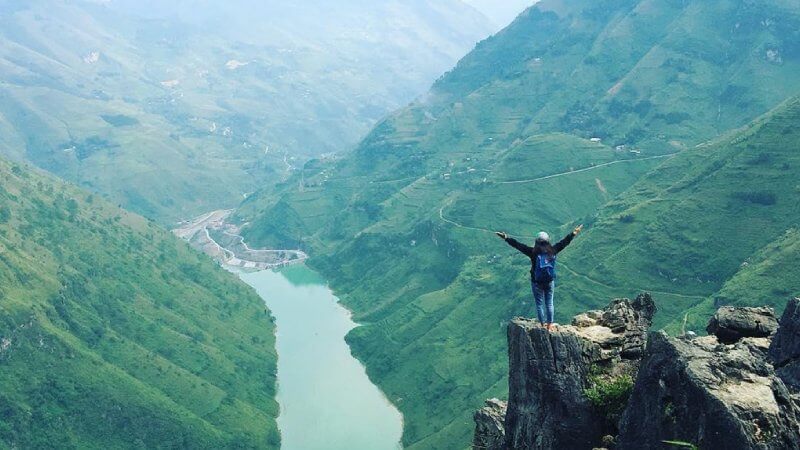For those seeking adventure off the beaten path, Ma Pi Leng Pass in Ha Giang, northern Vietnam, is an experience you won’t forget. Winding through remote highlands, the pass delivers jaw-dropping views, cultural encounters, and a sense of freedom that many travelers say they can’t find anywhere else in Southeast Asia.
Whether you’re motorbiking the legendary Ha Giang Loop or simply exploring Vietnam’s natural wonders, Ma Pi Leng Pass is a destination that stays with you long after you’ve left.
What makes Ma Pi Leng Pass so special?
Ma Pi Leng Pass is widely considered the most beautiful mountain road in Vietnam and it truly lives up to the name. Located at over 1,500 meters above sea level, this 20-kilometer stretch of road connects the highland towns of Dong Van and Meo Vac, offering panoramic views of jagged limestone peaks, deep valleys, and the winding Nho Que River below.
Built in the 1960s by ethnic minority workers as part of the “Happiness Road” project, the pass was once carved by hand — a powerful reminder of the region’s resilience and isolation. Today, it is part of the Dong Van Karst Plateau Geopark, a UNESCO-listed site known for its rare rock formations and high biodiversity.
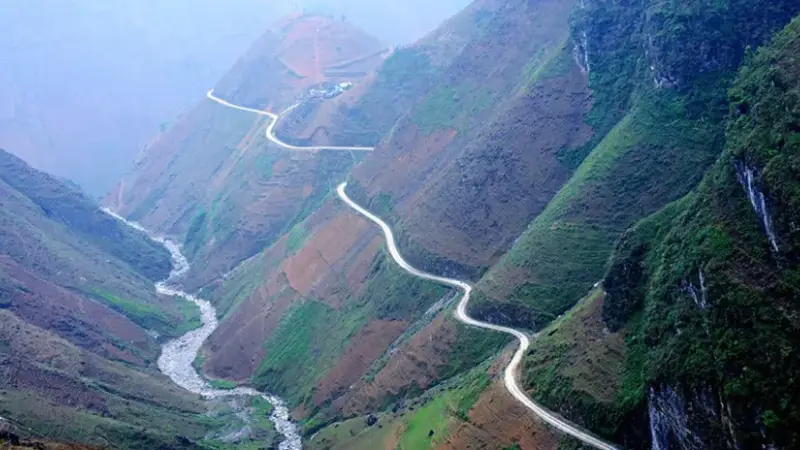
Highlights along Ma Pi Leng Pass
The viewpoint
At the highest point of the pass, a well-known viewpoint offers travelers a perfect place to stop and take in the stunning scenery. From here, you can see straight down into the Tu San Abyss — Southeast Asia’s deepest canyon — with the emerald-green Nho Que River snaking far below. Early mornings often bring a layer of mist that adds to the drama of the landscape.
Boat ride on the Nho Que River
A short drive or hike from the pass takes you down to the Nho Que River. From there, you can join a local boat tour (or kayak) through Tu San Canyon. Floating between 800-meter-high cliffs is a quiet, awe-inspiring experience — and a great way to see the pass from a completely different angle.
Boat tickets typically cost around 100,000–150,000 VND (€4–6) per person and take about 30–40 minutes. It’s best to go early in the day when the light is good and the crowds are minimal.
The Sky Walk (Sky Path Trail)
For those who like to stretch their legs, the Sky Walk is a narrow footpath running along the edge of Ma Pi Leng’s cliffs. Though not suitable for those with vertigo, this trail offers some of the most impressive views in the region and is ideal for photographers and hikers.
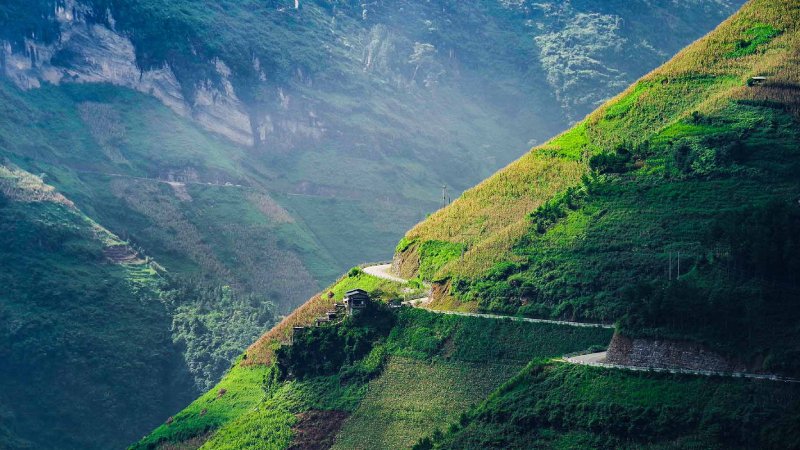
Local culture and people
Ha Giang is home to more than 20 ethnic minority groups, including the Hmong, Tay, Dao, and Giay. In the villages near the pass, many locals still wear traditional dress and live by farming and herding, offering a glimpse into daily life in the mountains. It’s important to respect their privacy and customs, especially in more isolated areas.
Many of the roadside stalls are run by locals, and buying a drink or snack is a good way to support small communities. Some homestays and tour guides also offer cultural experiences, like local meals, textile demonstrations, or short treks to nearby villages.
How to get to Ma Pi Leng Pass?
From Hanoi to Ha Giang
Take a sleeper bus or limousine from Hanoi to Ha Giang City. The trip takes about 6–7 hours and costs between €10–15.
From Ha Giang to Ma Pi Leng
Rent a semi-automatic motorbike in Ha Giang (approx. €6–8/day) or join a guided Ha Giang Loop tour with an “easy rider” (a local driver who rides while you sit on the back). From Ha Giang, you’ll follow the scenic loop: Ha Giang → Quan Ba → Yen Minh → Dong Van → Ma Pi Leng → Meo Vac
Ma Pi Leng is typically reached on day 2 or day 3 of the loop.
If you’re not comfortable on a motorbike, some companies offer private car tours with English-speaking drivers.
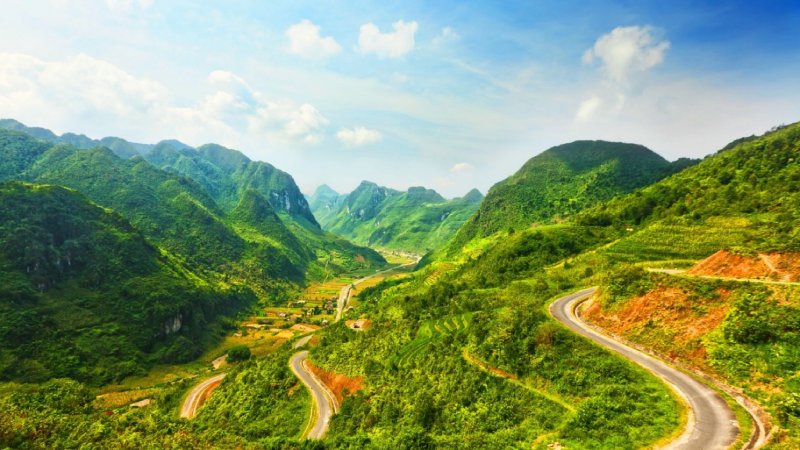
When to visit Ma Pi Leng Pass?
Best time: September to April, when the weather is dry and the skies are clear.
Avoid: Peak rainy season (June–August), when the roads can be slippery and visibility is poor.
If possible, aim for early morning or late afternoon for the best lighting and fewer vehicles on the road.
Where to stay
Most travelers base themselves in Dong Van or Meo Vac, both of which offer:
- Guesthouses and homestays (from €8–15/night)
- Restaurants serving local food (try the black chicken soup or corn wine!)
- Local markets (especially the Sunday ethnic market in Meo Vac)
For a unique experience, consider staying in a Hmong or Tay family homestay — a great way to learn more about local life.
Safety tips
- Drive cautiously: The roads are steep and winding. Go slow, especially around blind curves.
- Wear a helmet: Always. It’s required by law and essential for your safety.
- Check the weather: Avoid riding in heavy fog or rain.
- Fuel up: Gas stations can be few and far between in the mountains.
- Travel insurance: Make sure it covers motorbike riding in Vietnam.
Final thoughts
Ma Pi Leng Pass is not just a road — it’s a journey through some of Vietnam’s most raw and remarkable landscapes. From towering cliffs to quiet rivers, traditional villages to unforgettable views, this part of Ha Giang offers a type of beauty that words struggle to capture.
If you’re the kind of traveler who values authentic experiences, natural beauty, and a sense of discovery, Ma Pi Leng Pass will be one of the highlights of your time in Vietnam.
By the way, check this out on Get Your Guide: https://www.getyourguide.com/hanoi-l205/from-ha-noi-ha-giang-loop-4-day-tour-self-drivingeasyrider-t772560/

